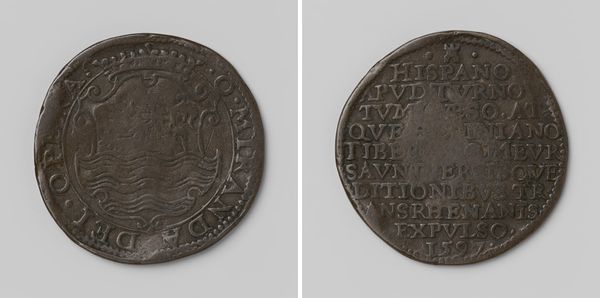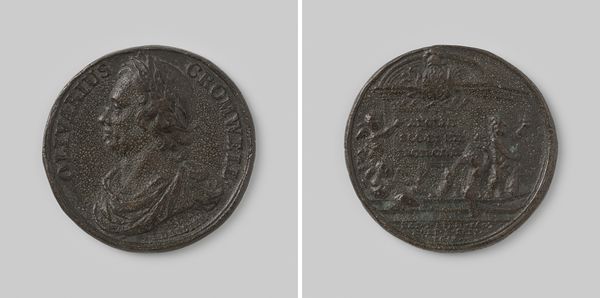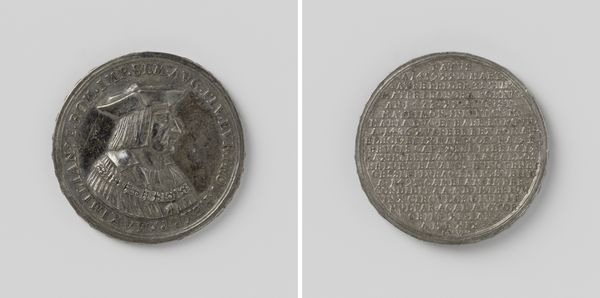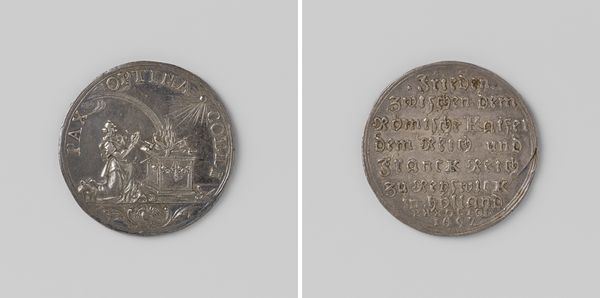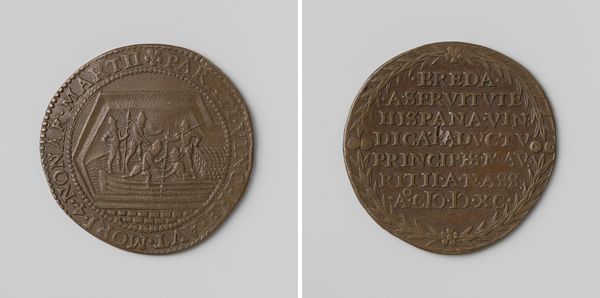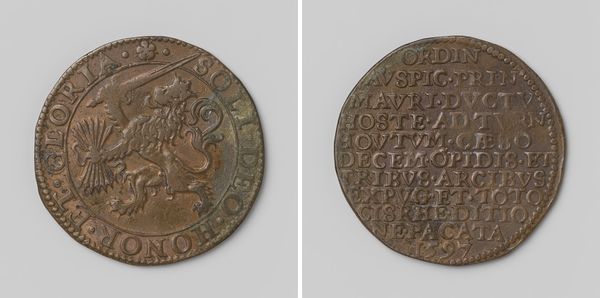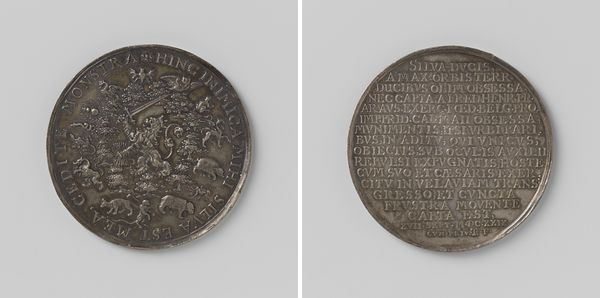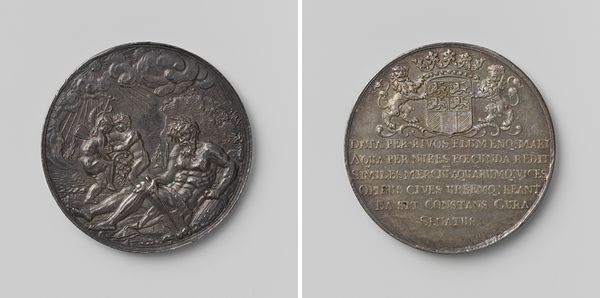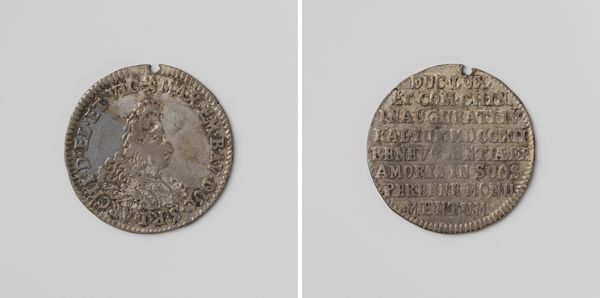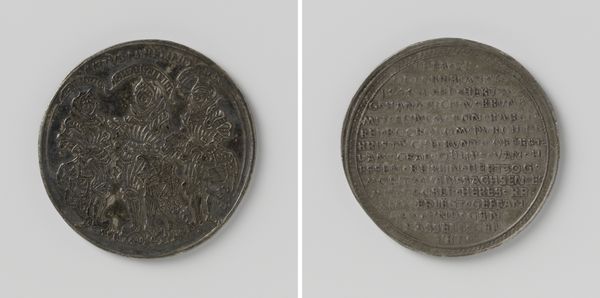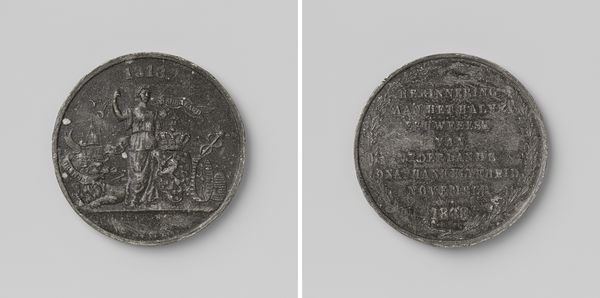
Overwinning in de slag bij Turnhout en het verdrijven van de Spanjaarden uit Alpen, Moers en het Rijngebied 1597
0:00
0:00
metal, relief, sculpture, engraving
#
medieval
#
metal
#
sculpture
#
relief
#
sculpture
#
history-painting
#
engraving
Dimensions: diameter 3 cm, weight 5.25 gr
Copyright: Rijks Museum: Open Domain
Editor: Here we have a metal relief from 1597, titled "Overwinning in de slag bij Turnhout en het verdrijven van de Spanjaarden uit Alpen, Moers en het Rijngebied" by an anonymous artist. The artwork appears to be a commemorative medallion. It’s quite dense, with lots of imagery and text. How do you interpret this work through a materialist lens? Curator: Looking at this piece, I immediately think about the labor involved. Who were the engravers and metalworkers who crafted this medallion? Were they part of a guild, or were they independent artisans? And what was the social status of those who consumed such objects? The very materiality of metal lends a sense of permanence and importance to the victory being commemorated, doesn’t it? Editor: Yes, definitely. I was also struck by how this almost blurs the lines between a historical document and a crafted object. Was this mass-produced, or intended for a specific, elite audience? Curator: That's a crucial point. Consider the technology available at the time. Engraving metal was a skilled craft, not easily mass-produced. This suggests a relatively limited distribution, perhaps among military leaders or wealthy merchants connected to the Dutch Revolt. The medallion then functions not just as art, but as a form of propaganda, disseminating a particular narrative of Dutch strength. Editor: Propaganda meant for the wealthy! It’s fascinating to think about how the value of the materials used could amplify the intended message. It seems much different from, say, pamphlets distributed to the masses. Curator: Precisely. The choice of metal over a cheaper material like wood or paper reveals much about the intended audience and the message’s perceived importance. Also, thinking about trade routes, where did they source their materials for production of such piece? That has it’s own story to tell. Editor: I see. Thinking about this as both a historical artifact and an object crafted with specific materials and distributed through specific channels gives me a much richer understanding. Curator: Indeed. Examining the medallion’s production and circulation reveals how art, even something seemingly simple, is embedded within complex social and economic networks.
Comments
No comments
Be the first to comment and join the conversation on the ultimate creative platform.
